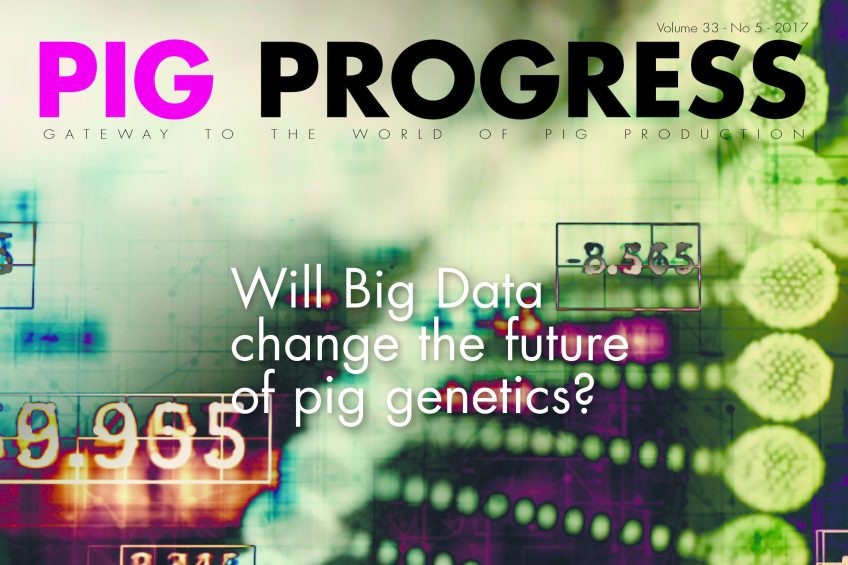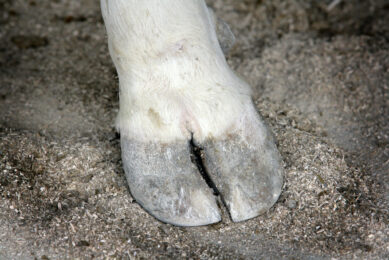New issue: Pig Progress focuses on biosecurity and genetics

Subjects related to biosecurity as well as breeding/genetics constitute the core of the latest print edition of Pig Progress.
The cover article is aptly titled ‘Will Big Data change the future of pig genetics?’ and aims to answer this main question. Seeing that Big Data are making way in all sectors of pig production, genetics is no exception.
In fact, author and pig genetics expert Benny van Haandel argues, the developments are happening right now. Increasingly more data are becoming available as it costs increasingly less to gather them and more techniques become available every day. Analysing them properly will take pig production to a next level. Page 24
Sex-sorted swine sperm
Years ago, studies were carried out on the techniques which could ensure the gender of pigs being born. This concept has been revived by developments in the United States, where sex-sorted sperm was introduced as a concept first in cattle – and this has now been extended into the swine business.
Are we heading towards a future with female finishers only? Correspondent Treena Hein reports on page 22.
Biosecurity and pig management
A lot has been said about internal and external biosecurity. Internal biosecurity means that inside pig farms every protocol is followed and that farm staff are aware how pathogens may travel within a farm. As P.H. Rathkjen and Xavier de Paz, Boehringer Ingelheim, describe, several apps might be useful. Page 12

Cannulating pigs
For a reliable outcome of pig nutrition research, sometimes it is needed to know how feed transforms during digestion. Cannulating pigs is a way to ‘tap’ some semi-digested feed from a pig’s gastro-intestinal tract without having to cull the animal. At Novus’ farm Green Acres in Missouri, they have a range of cannulated animals. Pig Progress editor Vincent ter Beek captured their story. Page 20
Enhancing digestibility of amino acids
How can the digestibility of amino acids be enhanced? At Dupont Animal Nutrition, they believe the combination of an enzyme and a probiotic has great possibilities. Scientist Laura Payling and swine platform lead Maria Walsh explain how exactly. Page 34

Columns on zinc and loose housing
A potential zinc ban is keeping many authors busy these days – including columnist John Gadd. He wonders what producers can do to alleviate a potential ZnO ban on page 9. In addition, welfare columnist Dr Monique Pairis-Garcia takes a closer look at loose house farrowing options for sows. Page 34
Switzerland: No island yet a pig island
Landlocked yet insular in a way, that holds true for Switzerland. The country asks more and different things from its pig production chain than in the surrounding EU and therefore the country’s pig industry has its own dynamics. Which? Read Maarten Ceyssens’ contribution on page 10.
Pig aggression – how to avoid it?
At Scotland’s Rural College, Edinburgh, UK, much effort has been spent on aggression issues among pigs over 15 years. How does it originate, what are the consequences for pig farmers, and what can they do about it? Researcher Dr Irene Camerlink presents a useful summary as from page 6.

World pig feed production is growing
Every year, the world’s feed production is growing – and so is the pig segment of that. Animal nutrition company Alltech summarised it in its annual overview; editor Emmy Koeleman of All About Feed made a concise summary. Page 14
Hamlet Protein and young animal nutrition
Emmy Koeleman also interviewed Søren Bank, the chief commercial officer of Hamlet Protein. He explains the company’s focus on young animal nutrition. Page 16

Sows and high temperatures
Sows do suffer from high temperatures and thus these may prove to be detrimental for their production performance. Animal nutrition company Lallemand shares some of their latest insights on how nutritional solutions can alleviate that. Page 27
To read all the articles in this issue, go to the magazine overview page and sign up with your current website login.











